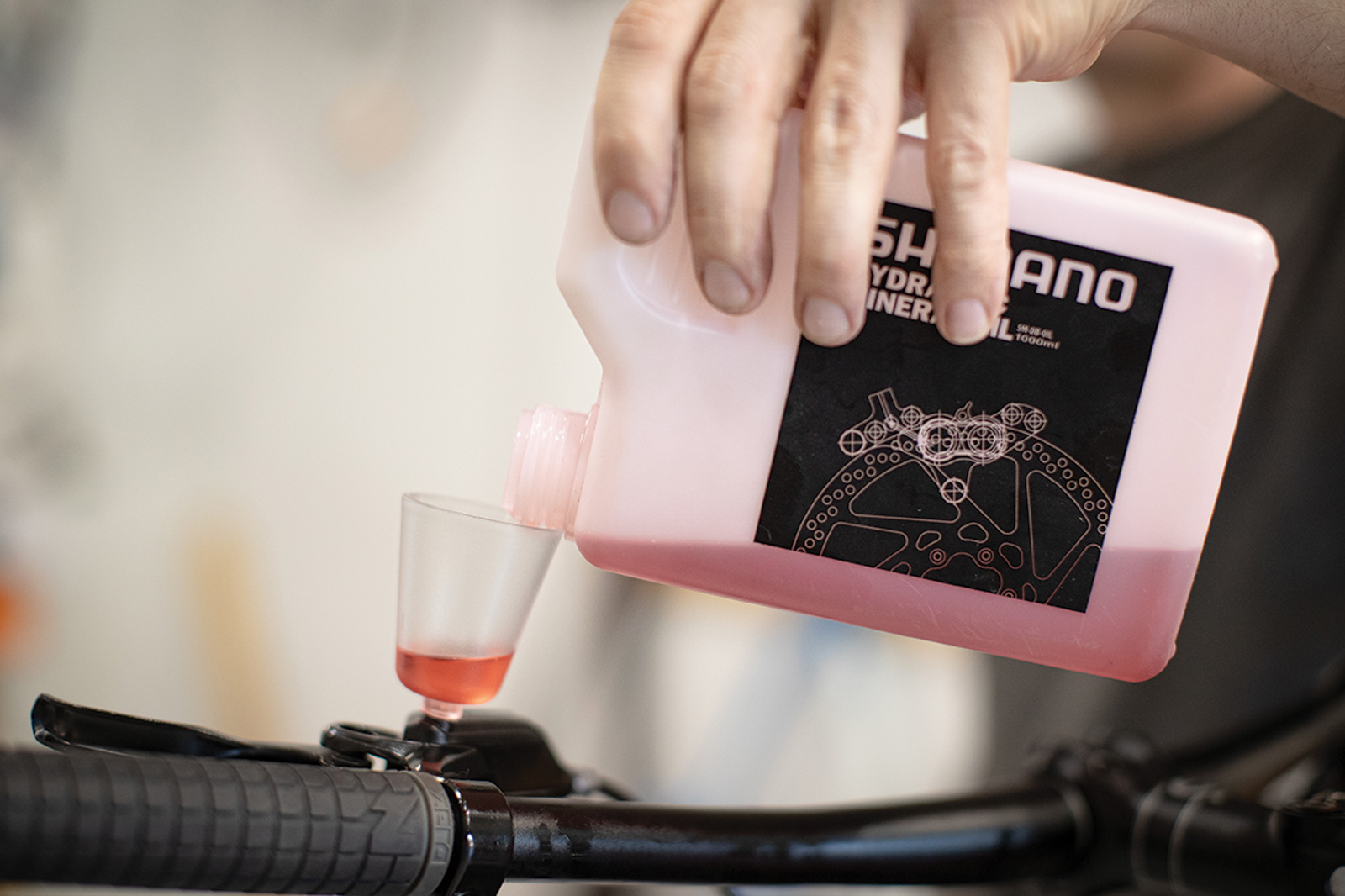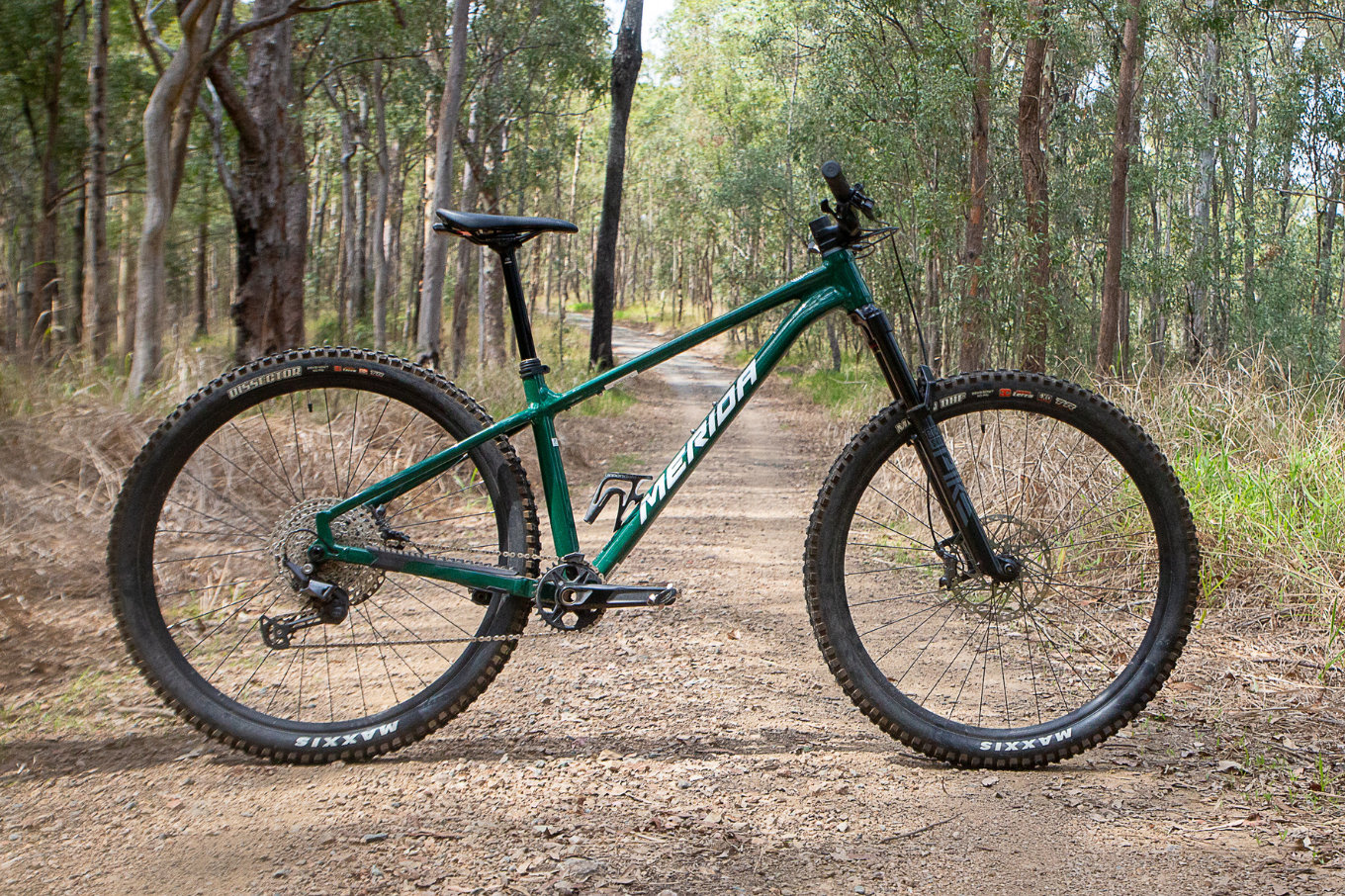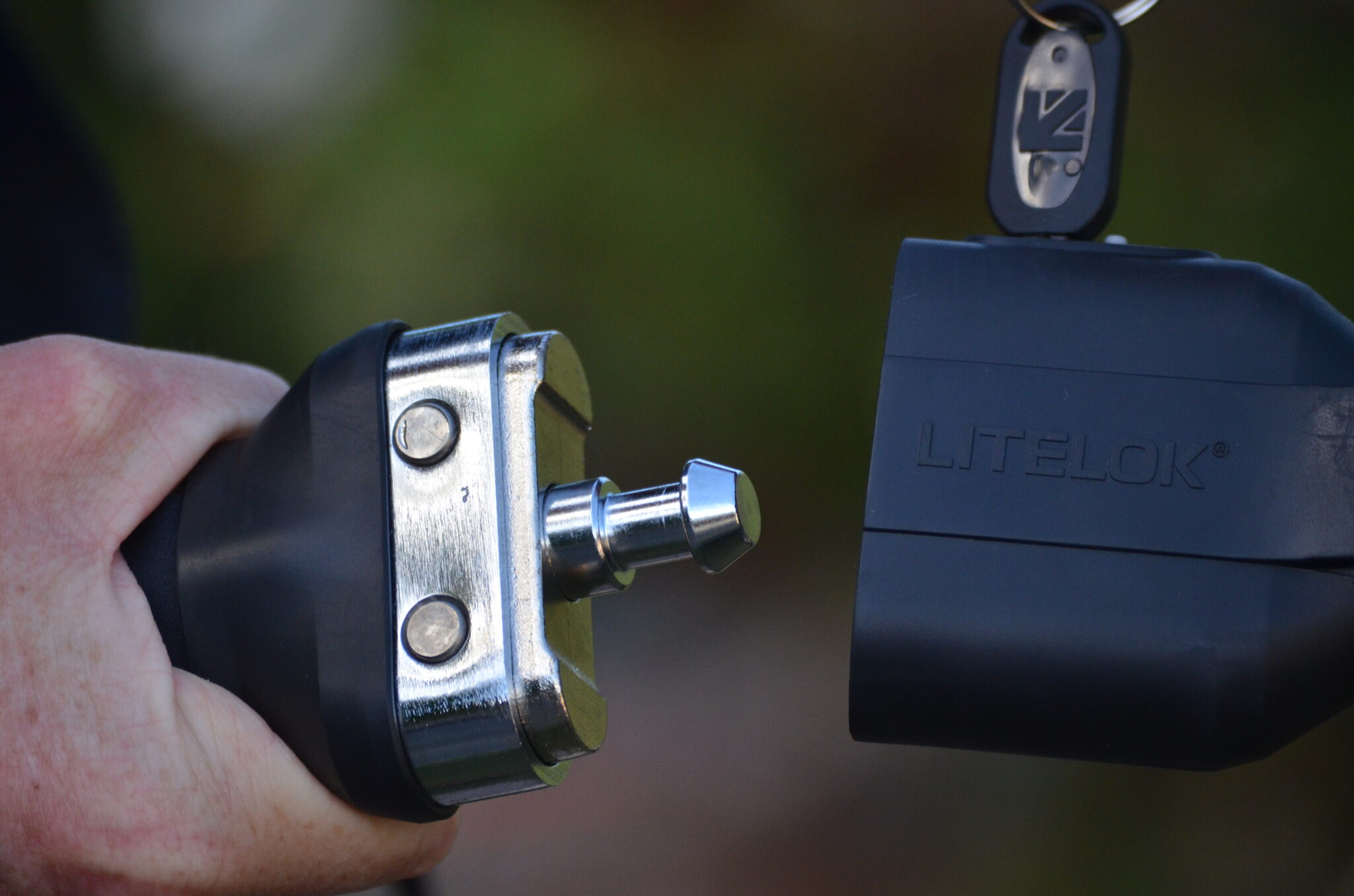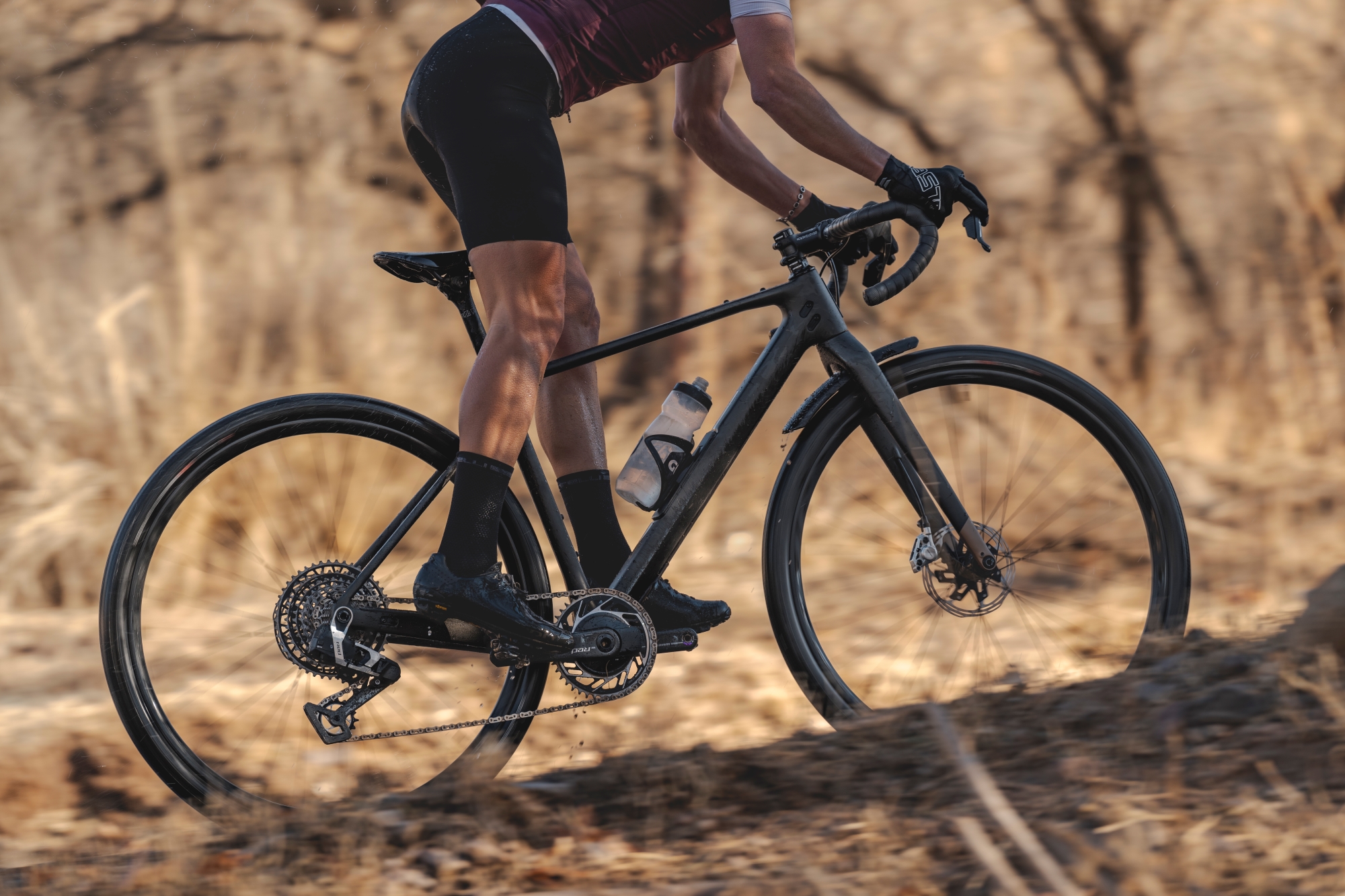WORKSHOP: How to bleed Shimano Brakes
Bleeding Shimano brakes is pretty simple when you know how. In this article, Will Shaw runs through a basic bleed.
Words: Will Shaw
Photos: Tim Bardsley-Smith
There are many good things about Shimano brakes. They’re powerful, reliable, and you get bang for your buck with their trickle-down technologies. Bleeding Shimano brakes is also a fairly simple task, and it’s well worth doing If your brakes are feeling spongy, or if it’s time to replace brake pads.
Tools Needed:
Allen key set, Shimano brake bleed kit (consisting of Shimano mineral oil, a Shimano bleed bucket, a bleed block, and syringe with an open hose attachment), needle nose pliers, a clean rag, brake cleaner, brake pad spreader (not pictured), 7mm spanner (not pictured).
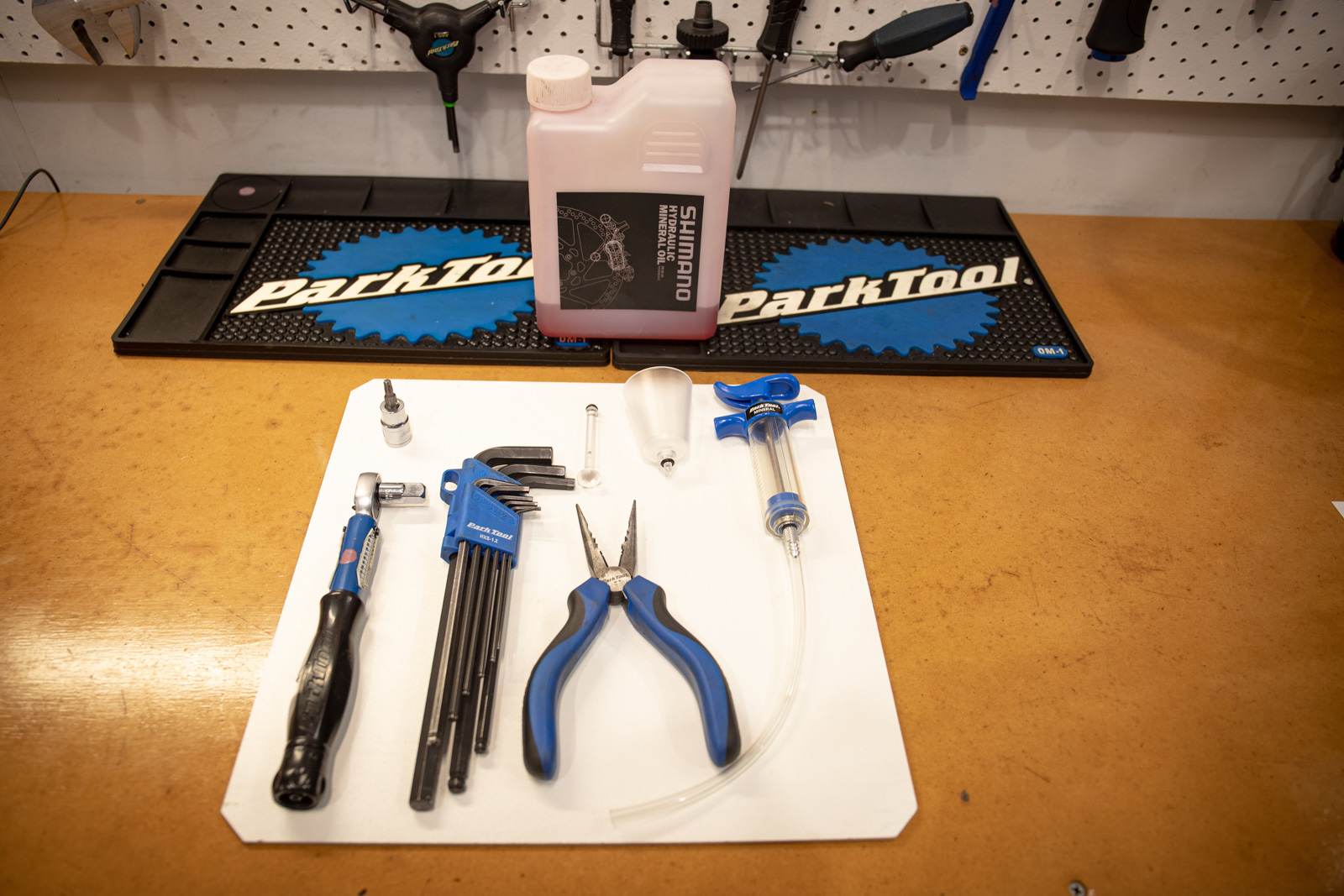
-
Remove brake pads from the caliper
You’ll need to remove your brake pads from the caliper using the Needle Nose Pliers for the retaining clip, and a 3mm allen key for the bolt itself. Place the pads somewhere where they won’t get contaminated by the mineral oil used in the brake bleed.
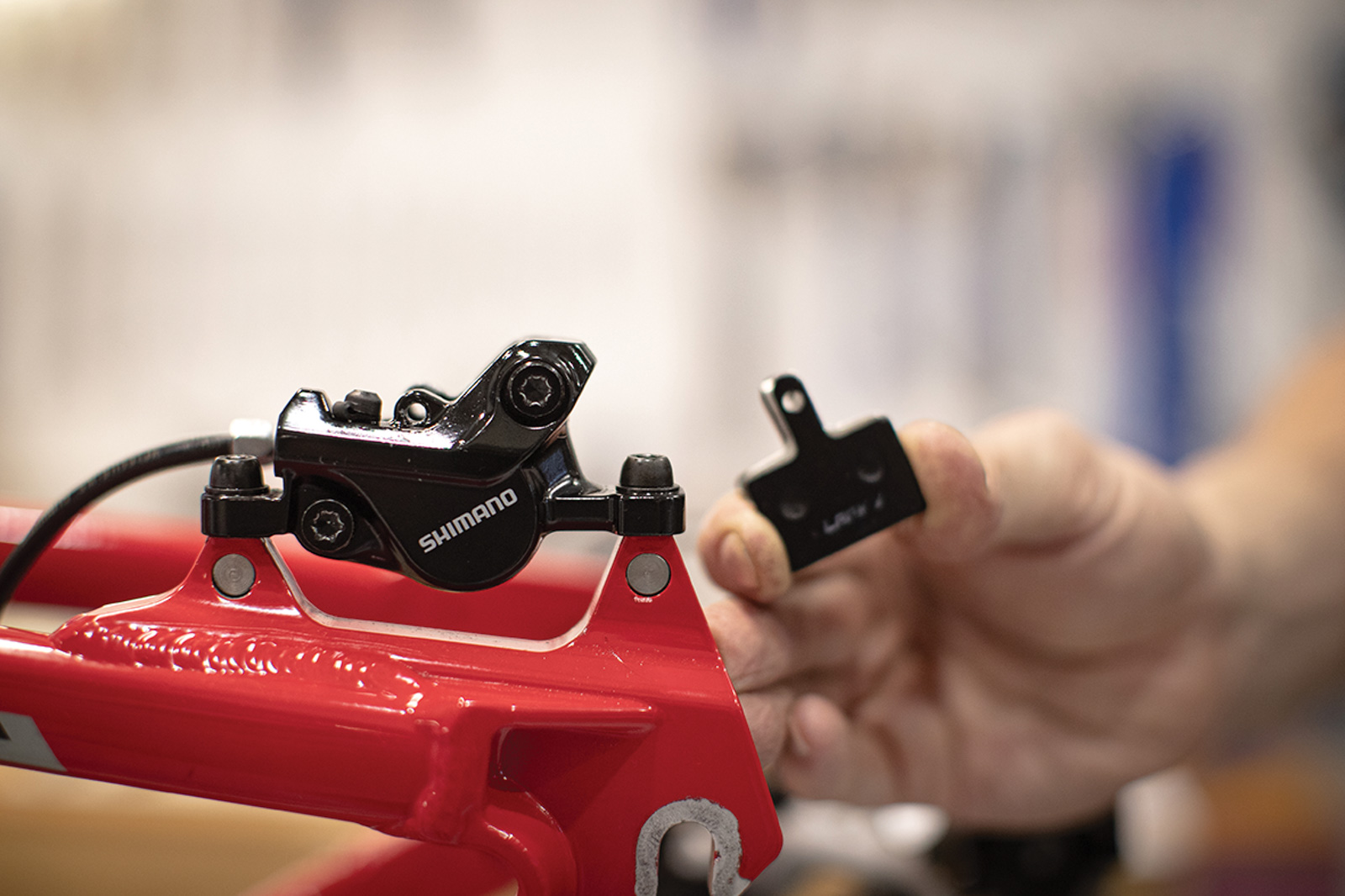
-
Adjust the brake lever into a flat position and remove the bleed cap
Adjust the brake lever into a flat position on the handlebar using a 4mm allen key. Then remove the bleed port cap with a 2.5mm allen key, along with the o-ring (the o-ring will often come out with the cap).
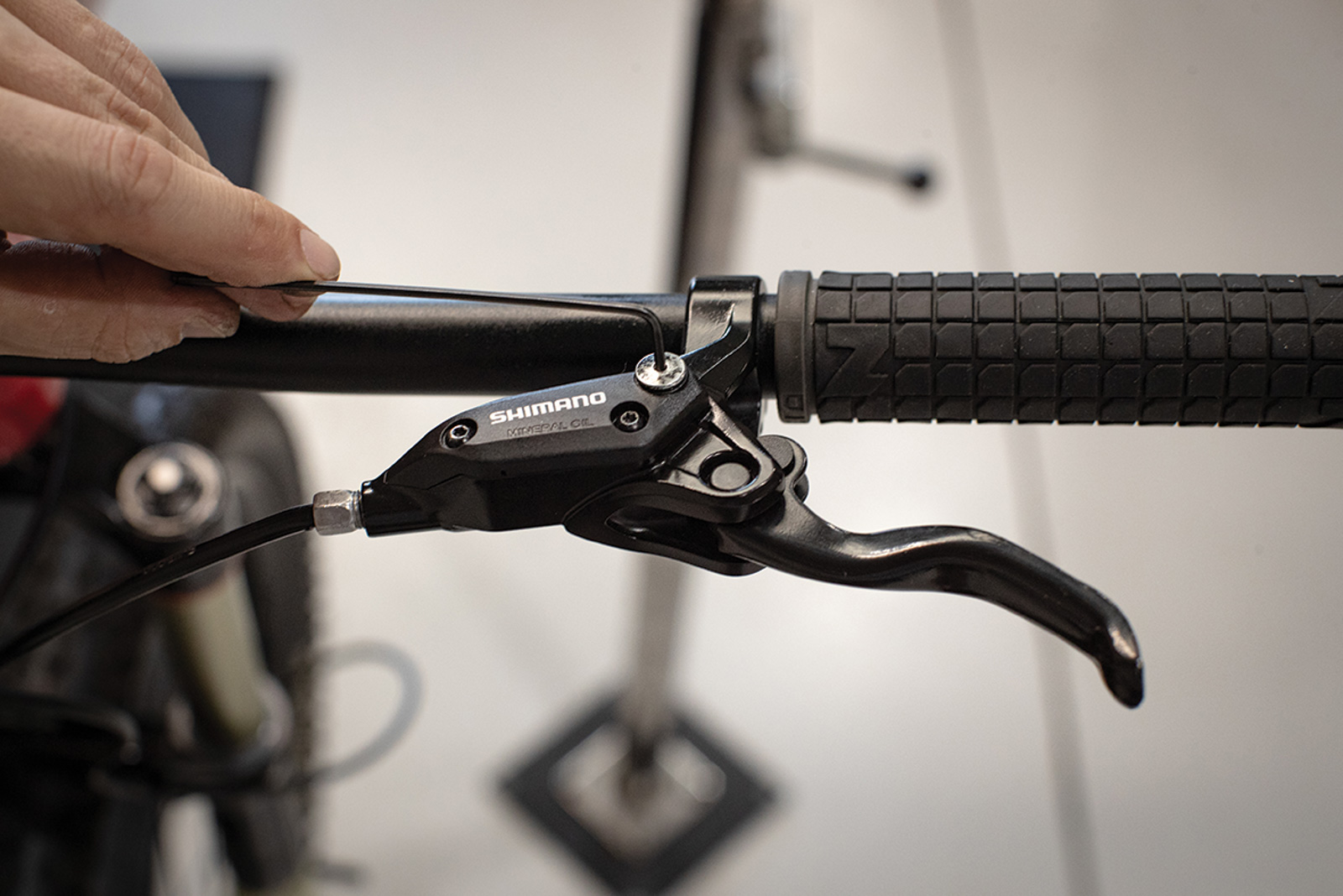
-
Thread the Shimano bleed Bucket into the lever
Thread the Shimano Bleed Bucket into the lever port. Ensure the bucket has a rubber o-ring at the bottom to create an air-tight seal and take caution as the bucket’s plastic threads are easily stripped.
-
Insert a bleed block
Insert a bleed block into the caliper. It may be necessary to push the pistons back into the caliper using a pad spreader. Take caution here as the pistons are easily damaged.
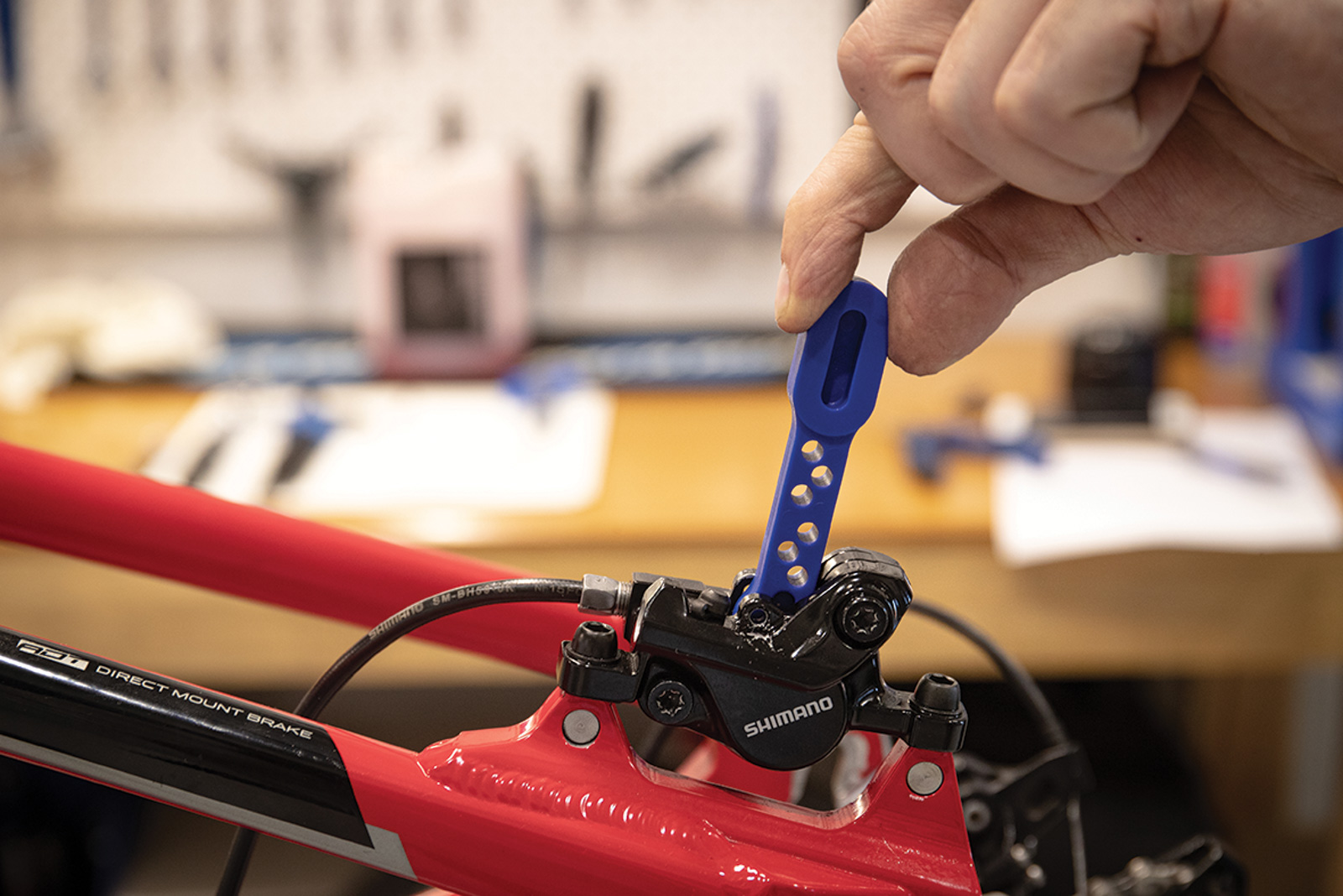
-
Fill the bleed syringe and brake bleed bucket
Fill the syringe half full with Shimano Mineral Oil. Invert the syringe and push out any air bubbles until only oil remains. Fill the brake bleed bucket half full with Shimano Mineral Oil.
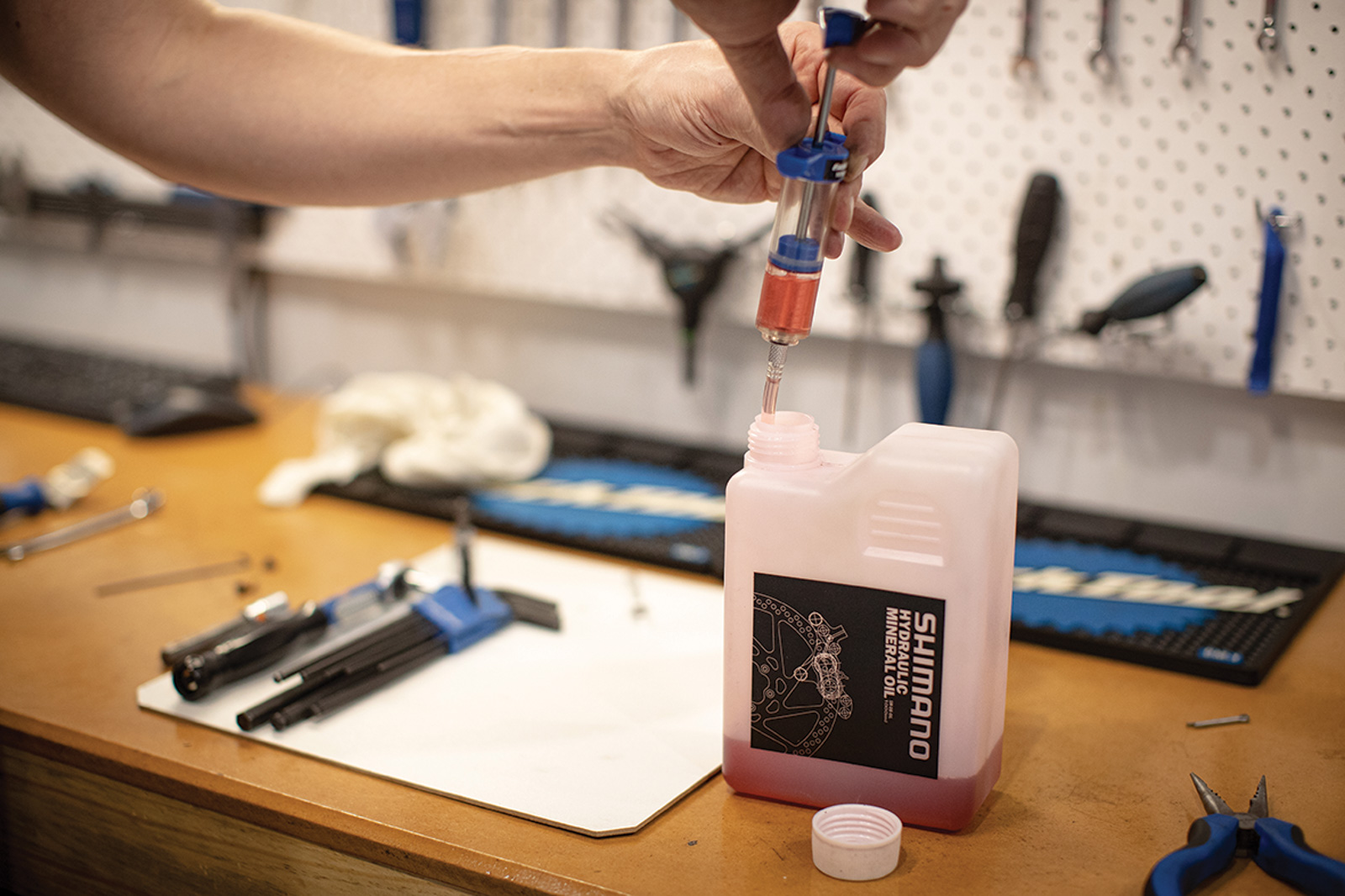
-
Insert the syringe onto the caliper bleed nipple
Remove the rubber cap on the caliper bleed nipple. Attach the syringe while putting gentle pressure on it to ensure no air gets inside the syringe/nipple connection. Depending on the brake you have there’s either an allen key or 7mm spanner required to open up the nipple. Pictured here is a brake that uses an allen key for this step of the procedure.
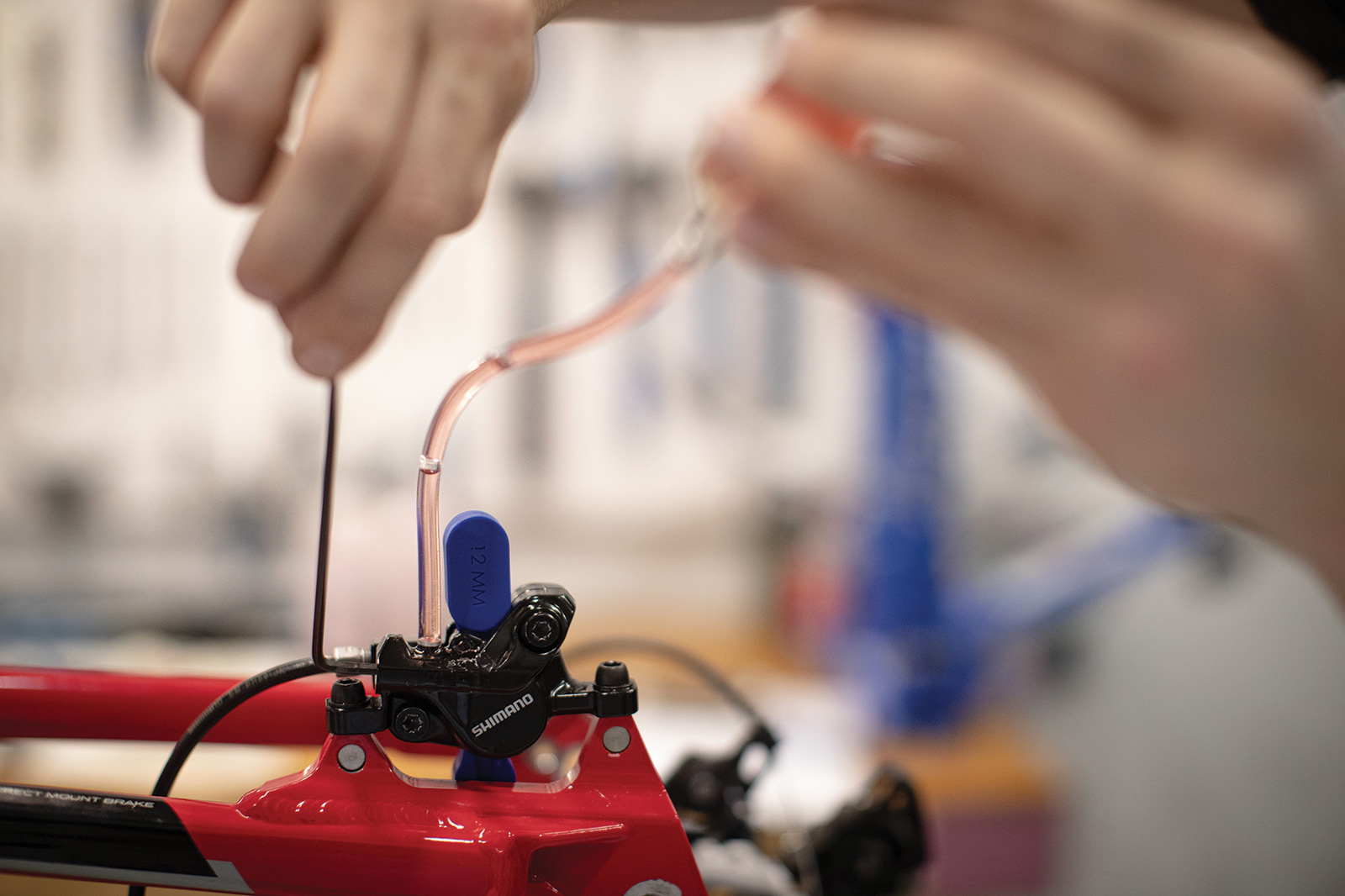
-
Push fluid through the system
Gently push fluid through the system, ensuring there’s no air bubbles as the fluid passes through the hose. You’ll see fluid coming up through the brake bucket on the lever. Keep pushing fluid through the syringe until there’s no bubbles coming out at the lever.
If the brakes have had plenty of use there’s a good chance the oil coming out will be more black than red, which means you’ve made the right call to bleed your brakes!
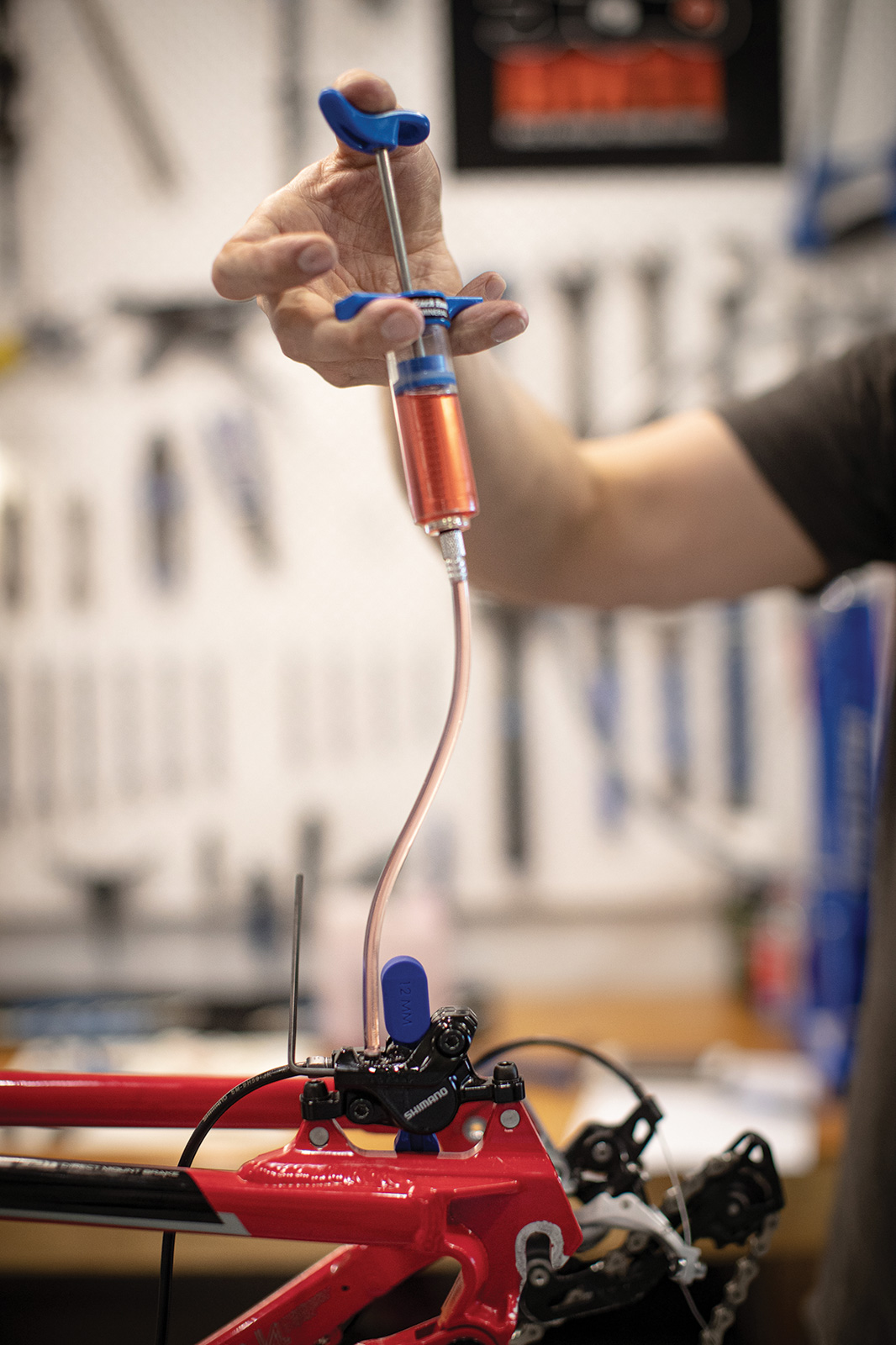
-
Remove the syringe from the brake caliper
When the fluid coming out into the brake bucket at the lever is the same colour as the fresh oil and there’s no air bubbles, it’s time to close the bleed port and remove the syringe from the caliper. Using your allen key or 7mm spanner, close the bleed port and then remove the syringe.
-
Pump the brake lever to get any excess air out
With the brake bleed bucket still attached, pump the lever to remove any trapped air. You can move the position of the lever to do this, and tapping on the brake line, caliper, and lever with an allen key can also help. Once there’s no air bubbles coming out the brake should feel nice and firm.
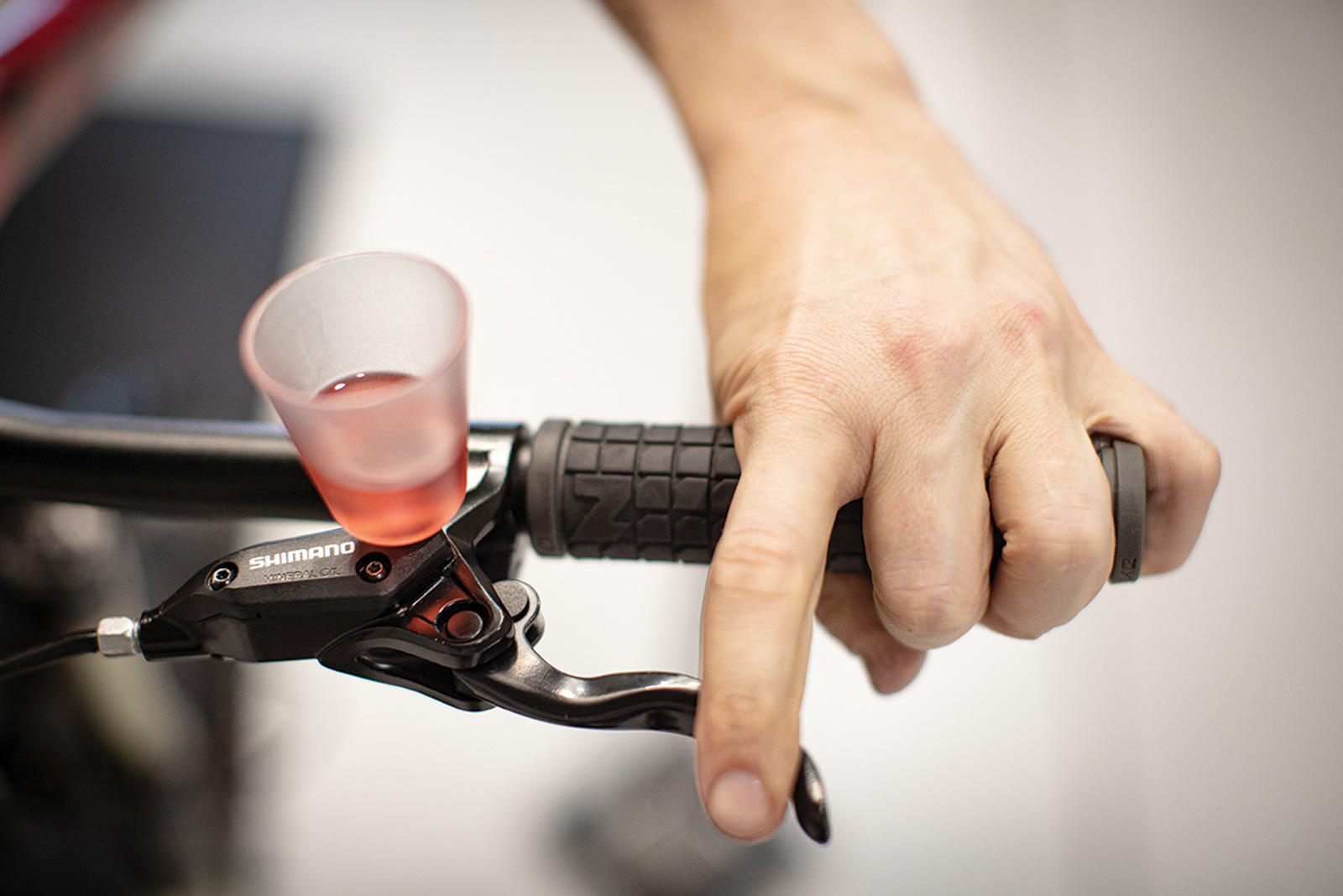
-
Remove the brake bleed bucket
Remove the brake bleed bucket from the lever. Make sure you put the plunger into the brake bleed bucket before doing this, and when you put the cap back on make sure it has the rubber o-ring on it. Don’t worry if a couple of drops of oil escape when you screw the cap on, you can wipe this off with a clean rag.
-
Clean any remaining oil from the caliper and lever
Using a clean rag with some brake cleaner sprayed onto it, give the caliper a thorough wipe down to ensure there’s no residual oil that could contaminate your brake pads. It’s a good idea to wash your hands before you re-install the brake pads also and give the lever a wipe down while you’re at it also.
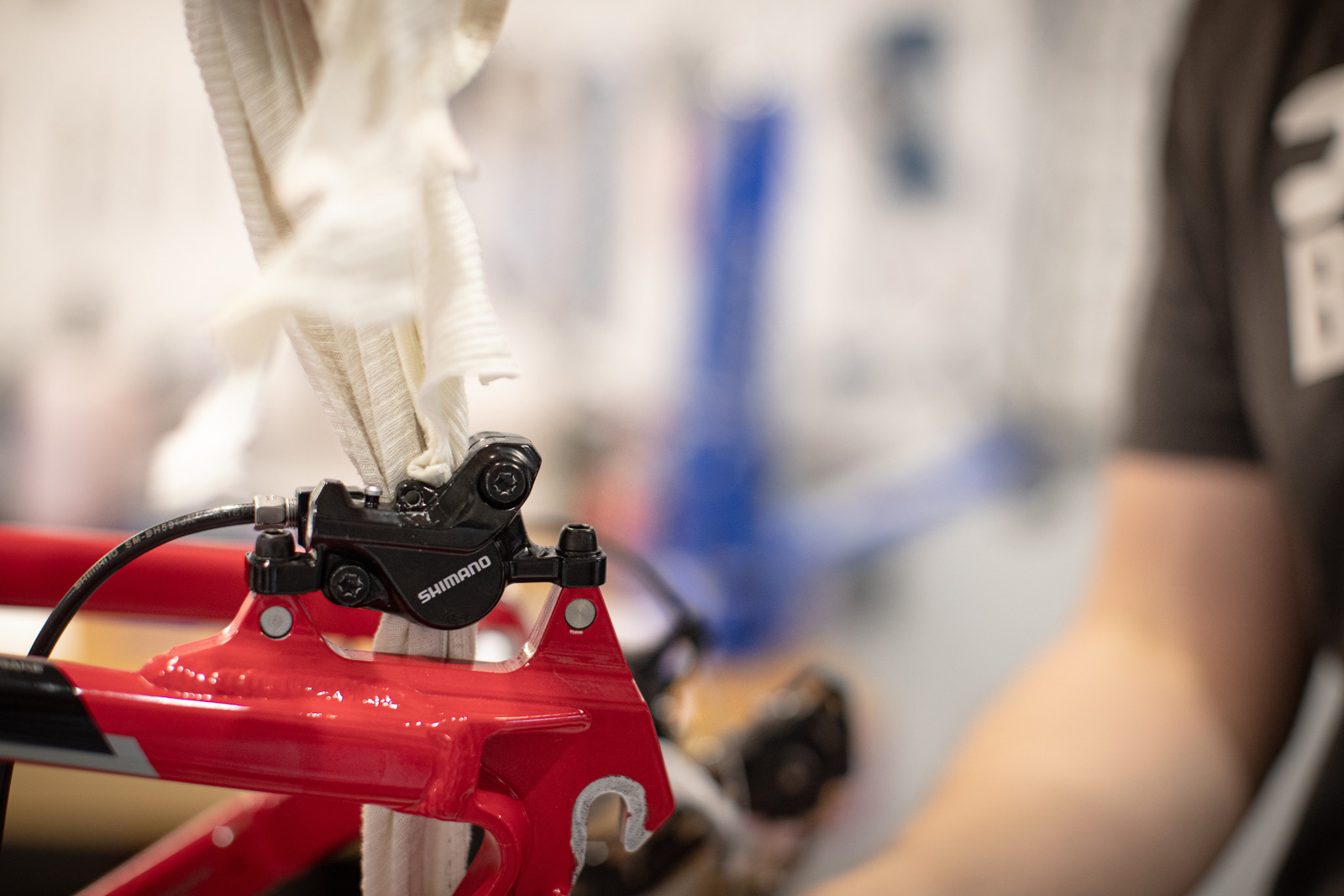
-
Reinstall your brake pads and wheel
Using your clean hands, re-install the brake pads and wheel. You’ll probably need to recentre your caliper after you’ve done a bleed to avoid rotor rub. Enjoy your fresh feeling stoppers!
Want to get your workshop skills up to speed? Contact the Bicycle Mechanic Training Institute – 5startraining.com.au/bmti/home

